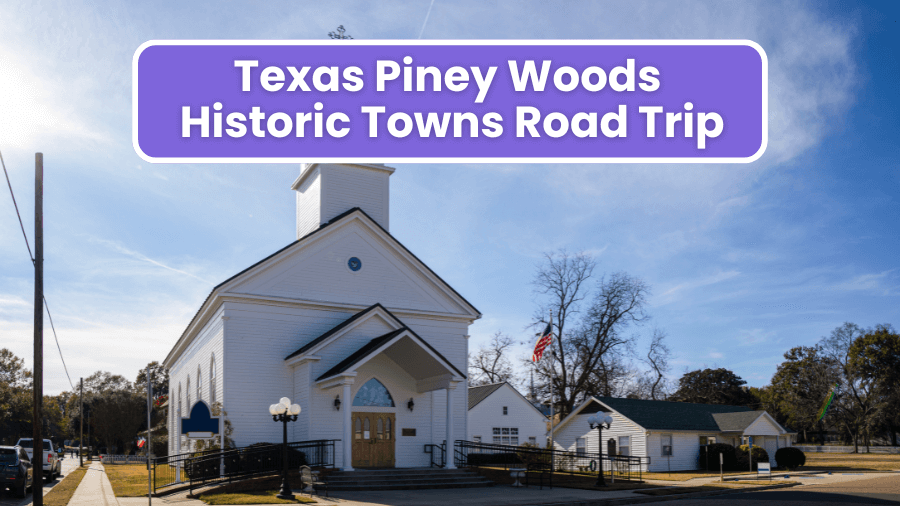East Texas is calling, and if you love historic small towns, winding country roads, and stories that go way back, this road trip is for you.
We’re talking brick-lined streets, century-old courthouses, quirky museums, and the kind of local diners where the sweet tea never stops flowing.
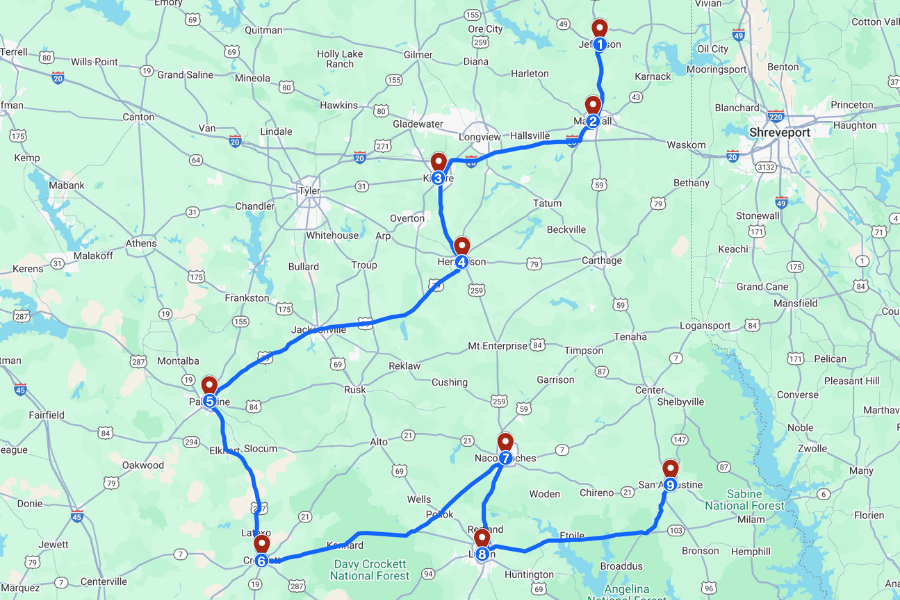
Some of these towns boomed in the steamboat and railroad days, while others struck it rich in the oil rush—but every single one has a story to tell.
1. Jefferson

Jefferson sits in the Piney Woods, about 20 minutes from the Louisiana border, and feels like stepping into a time machine set to the 1800s.
This place was a booming riverport in the steamboat era, and you can still see its history in the brick-lined streets, iron-front buildings, and lovely downtown.
It’s packed with fun stops like the Jefferson General Store, the spooky Grove haunted house, and even a museum dedicated to Gone with the Wind.
If you love ghost stories, historic B&Bs, or antique shopping, Jefferson is the kind of place where you’ll accidentally spend the whole day exploring.
2. Marshall
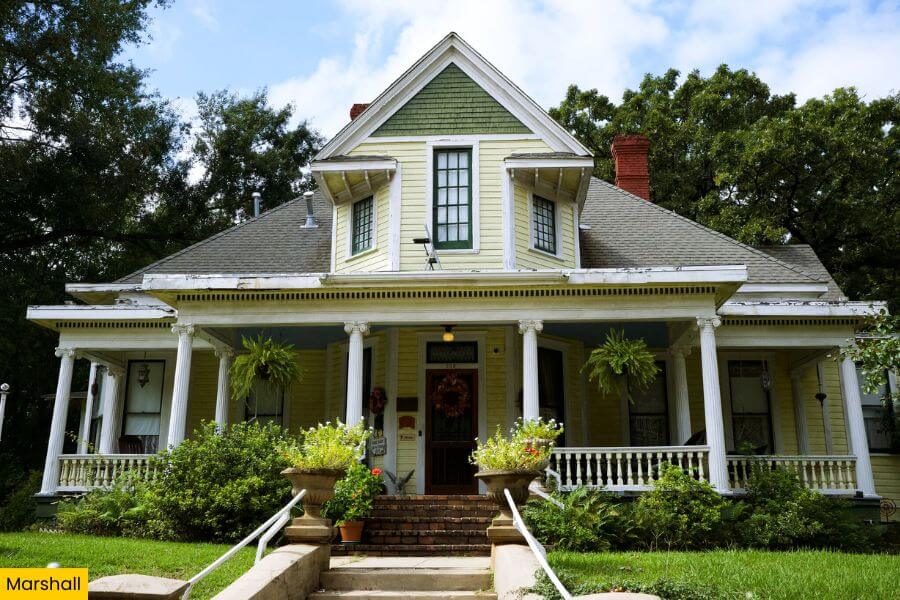
Just 20 minutes down the road, Marshall keeps the historic beauty going but cranks up the energy.
Famous for its jaw-dropping Wonderland of Lights display, this place also boasts deep ties to Texas history, the Civil War, and the railroad industry.
You can tour the historic Harrison County Courthouse, check out the Texas & Pacific Railway Museum, or hunt for the best brisket in town at Bear Creek Smokehouse.
Marshall has a little bit of everything—big history, big flavors, and, if you time it right, enough holiday lights to make anybody believe in Santa.
3. Kilgore
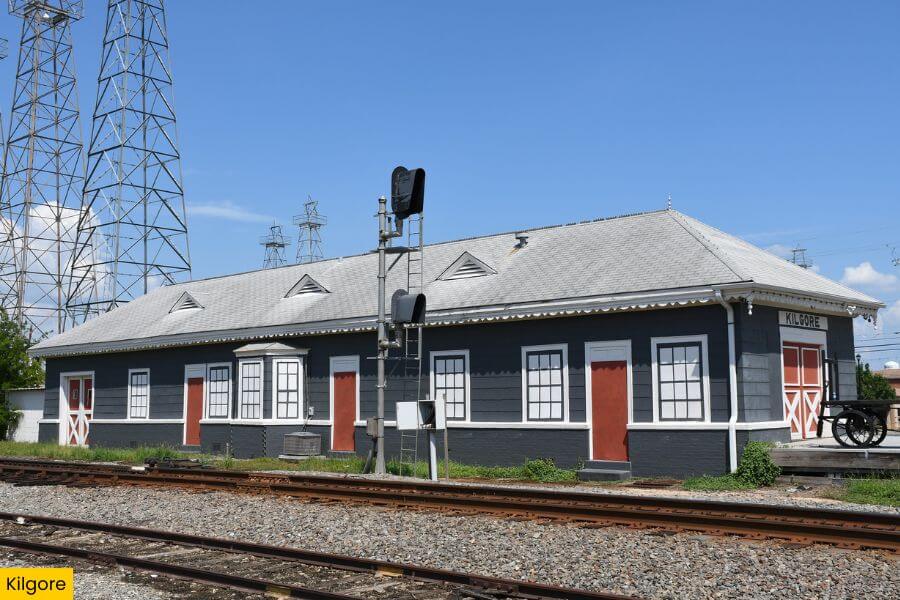
Keep heading west, and you’ll hit Kilgore, a place that went from sleepy farmland to full-blown oil boomtown practically overnight in the 1930s.
At one point, this place had more oil derricks per square mile than anywhere else in the world.
Today, you can still see the legacy with the famous “World’s Richest Acre” downtown—a cluster of towering oil rigs lit up like a Christmas tree at night.
If you’re into history, check out the East Texas Oil Museum, where you can walk through a recreated 1930s boomtown (complete with a general store and an old-school diner).
And if you’re into the arts, Kilgore is home to the Texas Shakespeare Festival, proving that this little oil stop has a whole lot of culture, too.
4. Henderson
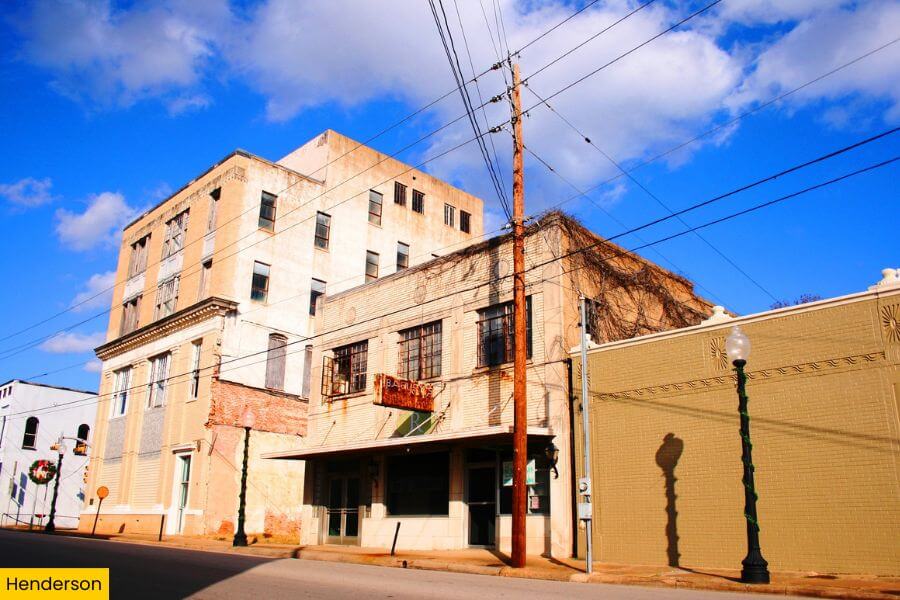
A short drive south lands you in Henderson, a spot with big personality and some of the best preserved historic homes in East Texas.
This place was also part of the oil boom, but instead of towering rigs, you’ll find streets with colorful Victorian houses and a downtown packed with antique shops.
If you’re into history, the Depot Museum is a must—it’s got everything from an old cotton gin to a working blacksmith shop, plus a restored 1901 train depot.
In November, you can catch the Heritage Syrup Festival, where locals keep the old-school tradition of making ribbon cane syrup alive with live demonstrations.
5. Palestine

Next up is Palestine, a place that mixes railroad history, small-town appeal, and some of the best springtime scenery in the state.
It’s home to the Texas State Railroad, where you can hop on a vintage steam train and roll through the Piney Woods like it’s 1920.
Visit in March or April for the Dogwood Trails Festival, when thousands of blooming dogwoods turn the parks and country roads into a photographer’s dream.
When hunger strikes, check out one of the local diners or cafés serving up classic East Texas comfort food.
6. Crockett

Keep cruising west, and you’ll roll into Crockett, the oldest town in Houston County.
Named after Davy Crockett, this town is packed with frontier history, historic buildings, quirky shops, and local food joints like the Moosehead Café.
To enjoy the outdoors you’ll want to check out Davy Crockett National Forest, a long stretch of pines, trails, and lakes great for hiking, fishing, or just soaking up the scenery.
If you visit in the fall, don’t miss the World Championship Fiddlers Festival, where some of the best fiddle players around compete for bragging rights.
(The World Championship Fiddlers Festival normally takes place in June but has recently shifted to September/October, so check for updates online before planning your visit.)
7. Nacogdoches

Nacogdoches is a stop in this Piney Woods road trip with the ultimate blend of deep Texas history and college-town energy.
As the oldest town in the state, it’s packed with historic sites like the Old Stone Fort Museum and Millard’s Crossing Historic Village with 19th century architecture.
You’ll also find cool coffee shops, live music, and some seriously good eats in town.
And if you love a scenic stroll, make sure to do the Azalea Trail in the spring when the streets turn into a sea of pink, purple, and white blooms.
8. Lufkin
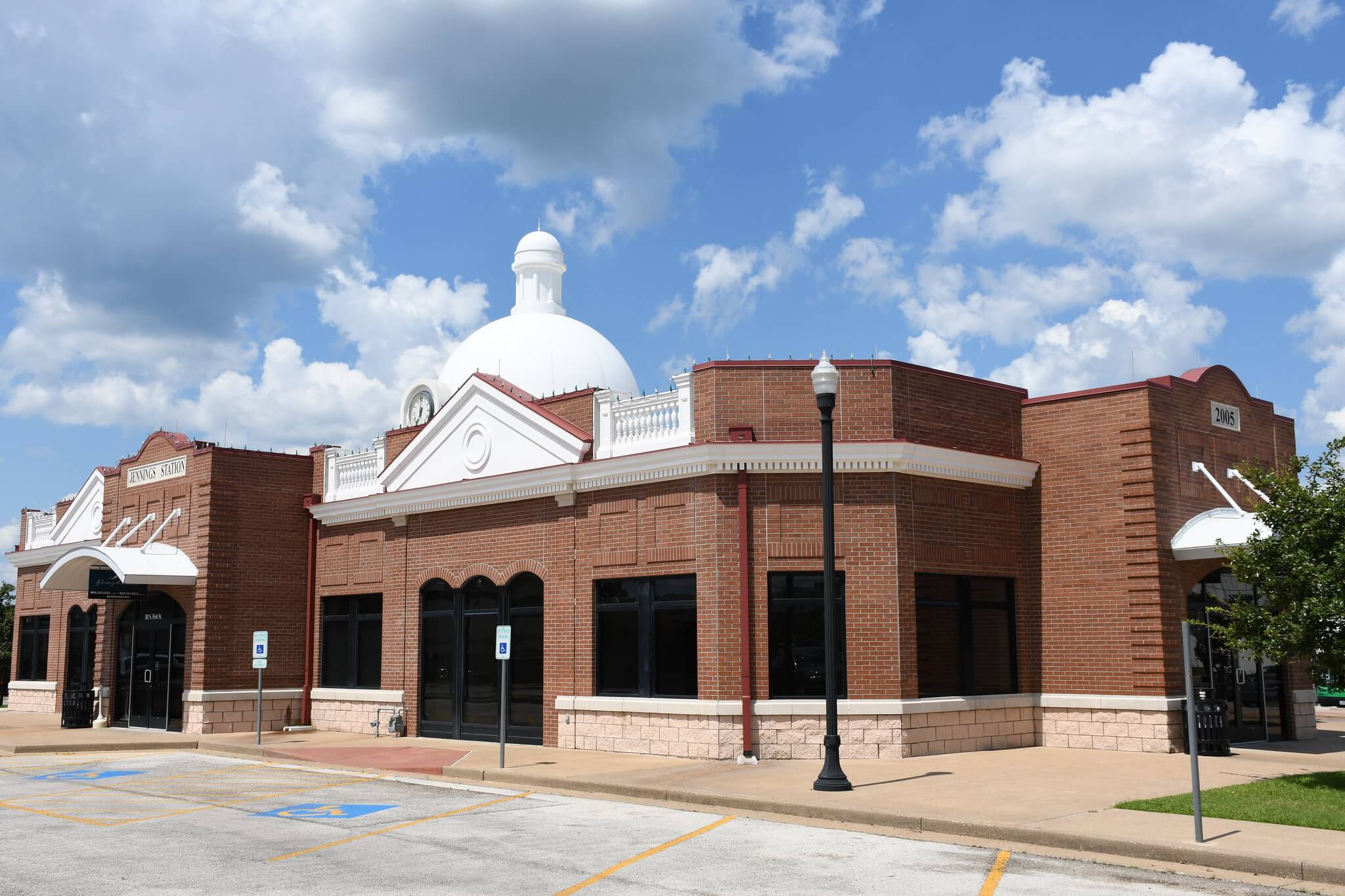
A quick drive south brings you to Lufkin, a town that blends East Texas charm with a whole lot of outdoor adventure.
This is the gateway to the massive Angelina National Forest, where you can hike, fish, or paddle through the pine-lined waters of Lake Sam Rayburn.
Back in town, the Texas Forestry Museum explores the region’s logging past, while the Ellen Trout Zoo features lions, lemurs, and a fun mini train ride.
You can also swing by Standpipe Coffee House for a caffeine fix or hit up Stringer’s Lufkin Bar-B-Q, where the brisket is smoky, juicy, and absolutely worth the trip.
9. San Augustine
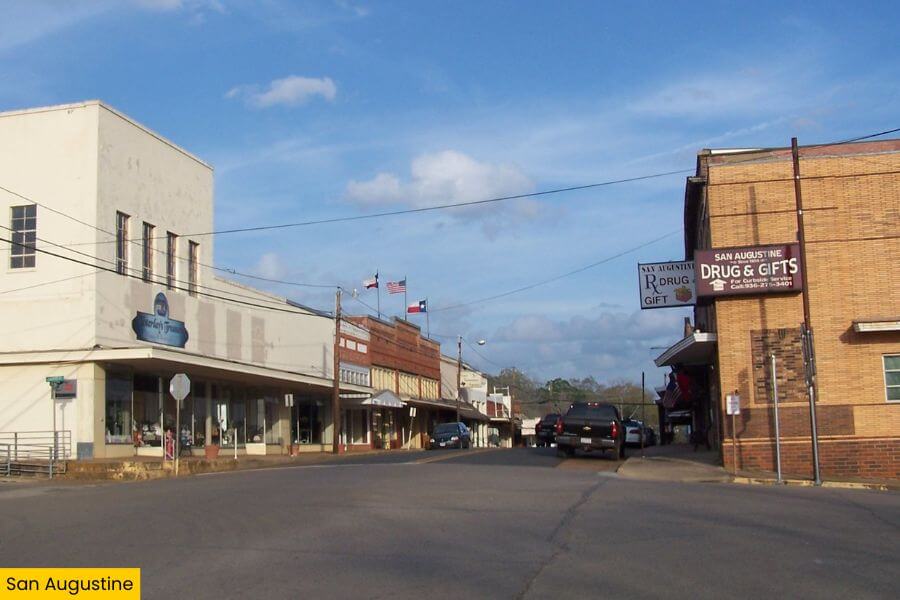
A little off the beaten path, San Augustine is where Texas history runs deep—like, “one of the first settlements in the state” deep.
This place is packed with history, from the 1927 courthouse to the Mission Dolores site, where early Spanish missionaries tried (and failed) to settle in the 1700s.
You can walk down Main Street and browse the beautifully preserved 19th-century buildings and local shops selling everything from antiques to homemade fudge.
San Augustine also sits right on the El Camino Real, the historic route that once connected Mexico to Louisiana.
Related Posts

